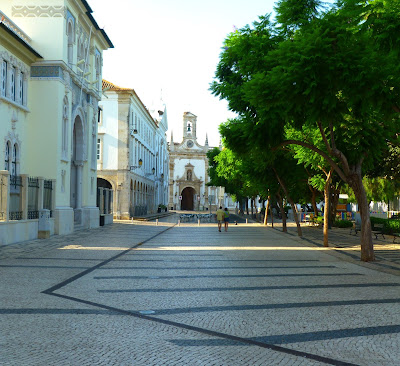The pale peachy rosé wine from the Château la Verrerie at Puget-sur-Durance has been a summer favourite
chez nous for some years. We almost certainly tried it first in one of the many restaurants in these parts, and starting calling it Château Ver-rer-y Good to distinguish it from the Château Verrière, which is also good but not our preferred choice. For special dinners, we normally buy a half-case at the excellent V Comme Vin shop in Apt rather than do what the Provenҫaux do, which is to buy direct from the producer.
But we finally made it to the Château la Verrerie the other day because, as part of the celebrations for its 30 years in the trade (a blink of an eye compared to the grand vignerons of France) an art exhibition was showing the work of one of the first local artists I featured when I first started this blog and I couldn't resist the chance to meet him.
I first saw Olivier Boissinot's vibrant paintings of the calanques while trawling the internet looking for an illustration for an excerpt from
The Lantern. When I found his website, I found he had captured exactly what had been in my head when I wrote - the searing brightness of the sea against the grey cliffs and the consequent sharpening of sight:
I sent him an email asking for permission to reproduce some of his work, he replied, and - thanks to the wonders of the internet - contact was made. Each time he had an exhibition, he would let me know, but until now, I hadn't been here at the right time.
As I walked into the Château la Verrerie, there was no mistaking I was in the right place!
And then I found the artist himself, enjoying a glass of excellent rosé,
naturellement. Here he is, in front of one of the paintings in another of his subjects: the jazz clubs of New Orleans. He and I and Rob were soon chatting away like old friends, or as he put it: an artist, a writer and a musician - why wouldn't we have lots of interesting thoughts in common?

We didn't come away empty-handed, either. A case of wine, of course. And a painting, too. I owed Rob a birthday present, and we'd vaguely talked about a picture. And suddenly, there it was, just perfect for his music room here in France - The Jazz Group.
We both loved the reds, yellows and oranges, which seem to be the colours of jazz, and the thick, slick quality of the paint on the canvas, as well as the composition. As it turned out, we are so delighted with it that we decided to hang it where we can look at it all the time in our living room. It's a big canvas, and makes quite a statement, but perfect for the kind of music we like to play here.
And the music room still has its Boissinot - one of many posters that Olivier generously gave us:
You can see more of Olivier Boissinot's work by visiting his website
Olivier Boissinot.
And for more information about the wine and the château, here is the site:
Château la Verrerie.

























































